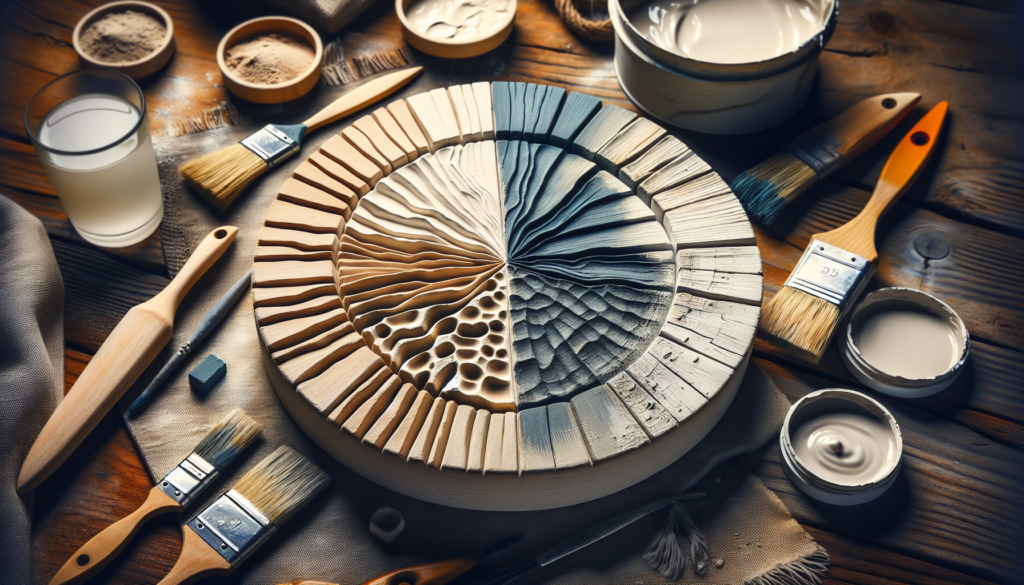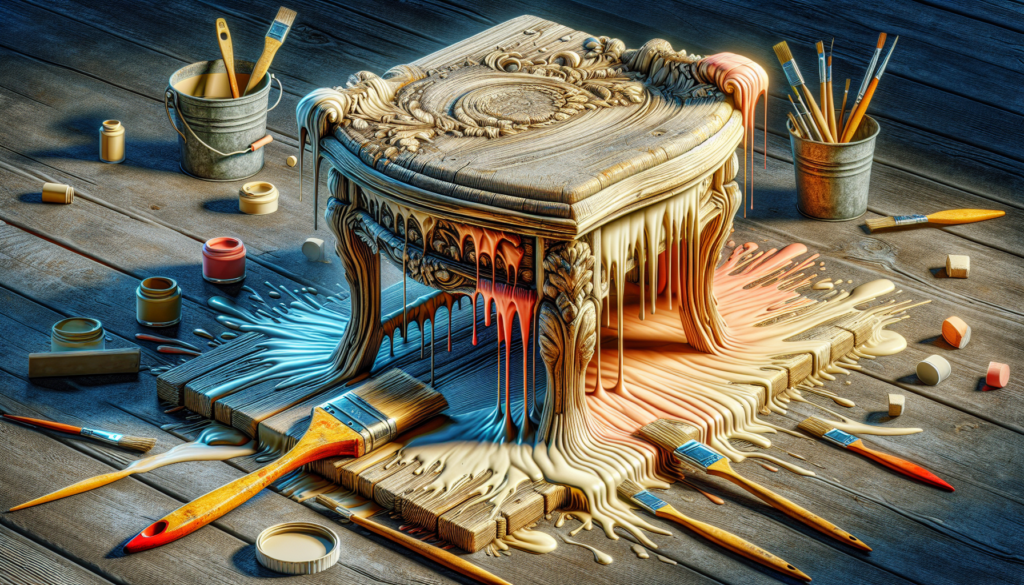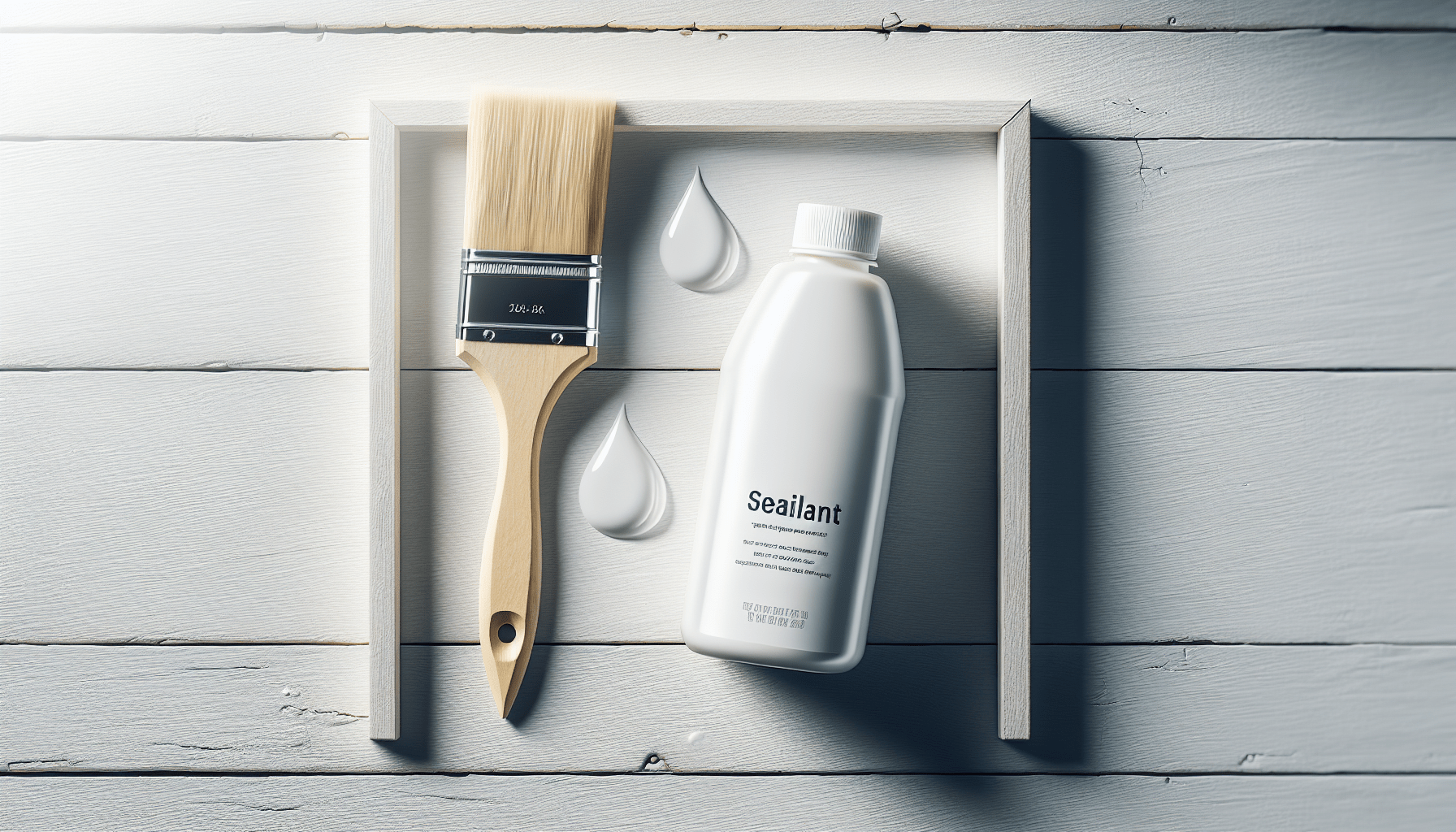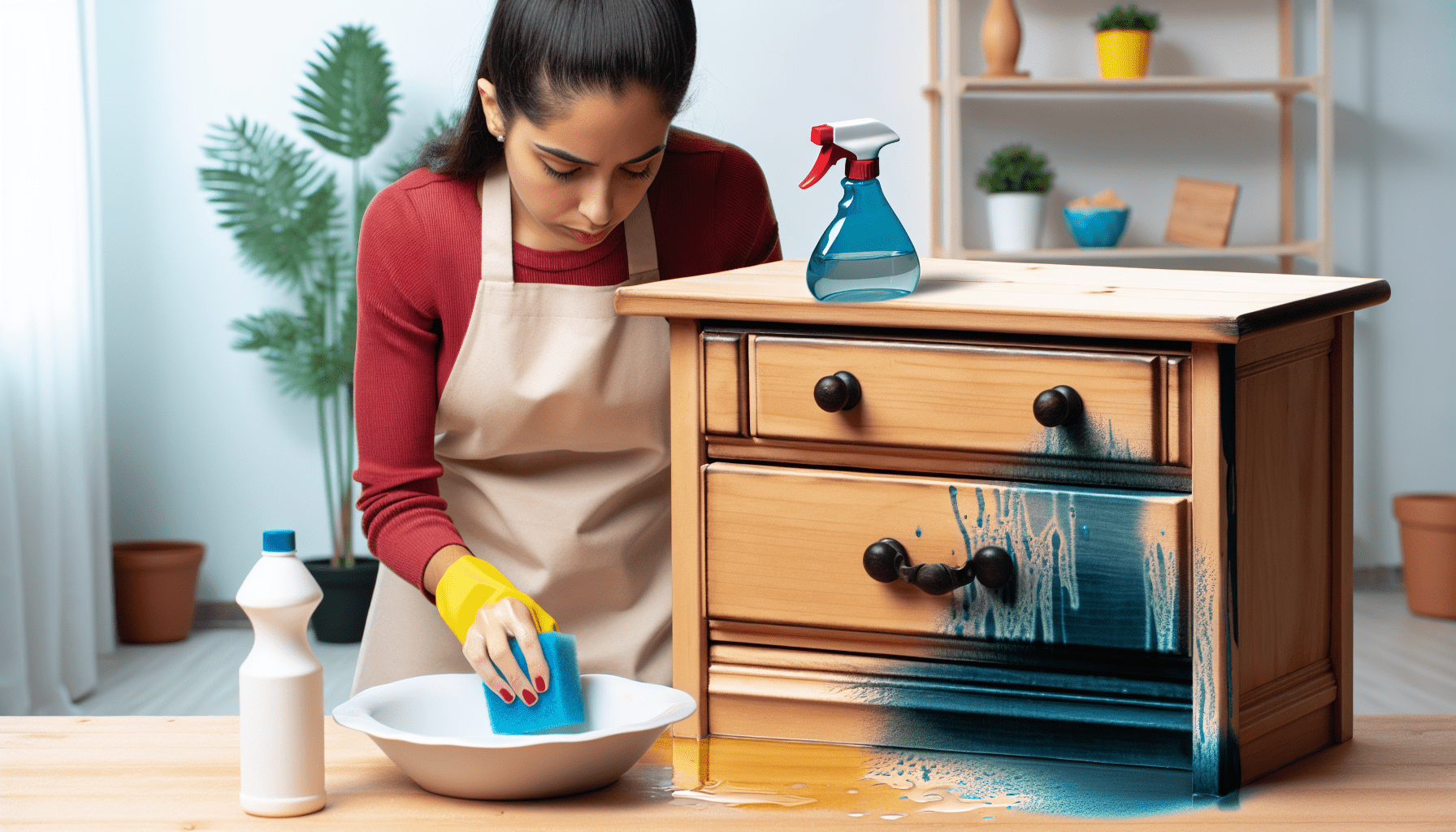Chalk paint, a popular choice for furniture restoration and DIY projects, offers a smooth and vintage finish that many enthusiasts seek. But how long does chalk paint take to dry on wood? Patience is key when it comes to this unique type of paint, as the drying time can vary depending on multiple factors. From the type of wood surface to the thickness of the paint application, this article will explore the average drying time for chalk paint on wood and the best practices to ensure a flawless finish. So, if you’re eager to transform your wooden furniture with chalk paint, read on to discover the tips and tricks for achieving exceptional results.

Factors Affecting Drying Time of Chalk Paint on Wood
When it comes to using chalk paint on wood, one of the key considerations is the drying time. Understanding the factors that can affect the drying process is crucial to ensure a successful paint job. The type of chalk paint, application method, wood type and condition, humidity and temperature, as well as the thickness of paint coats all contribute to how long it takes for the paint to dry and cure.
Type of Chalk Paint
There are two main types of chalk paints commonly used on wood surfaces: water-based chalk paints and oil-based chalk paints. Each type has its own unique characteristics that can influence the drying time.
Water-based Chalk Paints
Water-based chalk paints are popular for their ease of use and quick drying time. These paints typically dry faster than oil-based alternatives. Their water content allows them to dry rapidly, which is advantageous if you have time constraints or need to apply multiple coats within a short period. However, keep in mind that water-based paints may not provide the same level of durability as oil-based options.
Oil-based Chalk Paints
Oil-based chalk paints, though less common, have their own advantages. They often provide a more durable finish and are ideal for surfaces that require added protection, such as outdoor furniture. However, it’s important to note that oil-based chalk paints generally take longer to dry than their water-based counterparts. The curing process for oil-based paints can stretch out for several days, requiring patience and careful handling to avoid smudging or damaging the finish.
Application Method
The method used to apply chalk paint can also influence the drying time. The three most common application methods are brush application, spray application, and roller application.
Brush Application
Brush application is the most traditional and widely used method for applying chalk paint. It allows for better control over the paint coverage and ensures an even application. When using this method, the brush’s bristle type and size, as well as the stroke technique, can affect the drying time. Generally, brush application provides a thin and even layer of paint, which contributes to faster drying times.
Spray Application
Spray application is an alternative method that can offer faster coverage and a smoother finish. By atomizing the paint into tiny droplets, spray application allows for quick and even distribution on the surface. However, it’s important to note that spray application can result in a thicker coat of paint, which can prolong the drying time.
Roller Application
Roller application is another popular option for applying chalk paint. It allows for quick coverage on larger surfaces and creates a textured finish. The choice of roller nap can influence the amount of paint applied and the drying time. Using a roller with a shorter nap will provide a thinner coat, enabling faster drying.
Wood Type and Condition
The type and condition of the wood surface being painted can significantly impact the drying time of chalk paint. Understanding the characteristics of different wood types and their absorbency levels is crucial for achieving the desired finish.
Softwoods
Softwoods, such as pine or cedar, tend to be more absorbent compared to hardwoods. This higher absorbency can lead to longer drying times as the wood fibers soak up the moisture from the paint. It is important to take this into consideration when planning your painting project.
Hardwoods
Hardwoods, including oak or mahogany, generally have a lower absorbency rate. This means that they may require less time for the paint to dry compared to softwoods. However, it is still important to allow sufficient drying time to ensure a durable and long-lasting finish.
Porous Wood
Porous wood surfaces can absorb moisture from the paint more readily, resulting in longer drying times. Before applying chalk paint to porous wood, it is recommended to seal the surface with a primer or a wood conditioner to minimize the paint’s penetration, allowing for faster drying.
Smooth Wood
Smooth wood surfaces, such as veneer or laminates, often have a sealed or glossy finish. This can create a barrier that slows down the drying process. To improve drying time on smooth wood, lightly sand the surface before applying the chalk paint to create better adhesion and promote quicker drying.
Unfinished Wood
Unfinished wood surfaces, lacking any protective coatings or sealants, generally have a higher absorbency rate. This can lead to longer drying times as the wood soaks up the paint. Preparing the unfinished wood surface with a primer or wood conditioner before applying chalk paint can help reduce drying time.
Previously Painted Wood
When painting over a previously painted wood surface, the existing paint layer can affect the drying time. If the previous paint layer is thick or poorly adhered, it can prolong the drying process as the moisture struggles to penetrate through the multiple layers. It is recommended to sand or strip the old paint layer before applying chalk paint to ensure faster drying and better adhesion.

Humidity and Temperature
Humidity and temperature play integral roles in the drying process of chalk paint. Both factors can either accelerate or slow down the drying time, depending on their levels.
High Humidity and Low Temperature
In high humidity conditions, the moisture in the air can hinder the evaporation of water-based chalk paints, leading to longer drying times. Additionally, when combined with low temperatures, the drying process can be further delayed. If possible, it is advisable to avoid painting in such conditions to achieve optimal drying results.
Low Humidity and High Temperature
In contrast, low humidity and high temperature can speed up the drying process of chalk paint. The lack of moisture in the air allows water-based paints to dry quickly, while higher temperatures cause the water to evaporate at a faster rate, reducing drying time. However, it is important to strike a balance and avoid extremely high temperatures, as they can cause the paint to dry too fast, leading to cracking or improper bonding.
Ideal Conditions for Faster Drying
The ideal conditions for faster drying of chalk paint on wood generally involve moderate humidity levels (around 40-60%) and temperatures between 70-85°F (21-29°C). These conditions optimize the evaporation process without compromising the quality of the paint finish. It is important to note that different types of chalk paints may have specific temperature and humidity recommendations provided by the manufacturer, so always refer to the product’s instructions for best results.
Thickness of Paint Coats
The thickness of the paint coats applied can significantly impact the drying time of chalk paint on wood. The number of coats and the amount of paint applied per coat can influence how long it takes for the paint to dry and cure.
Thin Application
Applying thin coats of chalk paint allows for quicker drying times. Thin coats have a lower volume of paint, which allows the moisture to evaporate faster. Additionally, multiple thin coats can be applied within a shorter timeframe, expediting the completion of the project.
Thick Application
On the other hand, thick coats of chalk paint will take longer to dry. The thick layer of paint retains more moisture, slowing down the drying process. If a thicker coat is desired, it is recommended to allow sufficient drying time between coats to prevent smudging or damaging the paint.
Drying Time for Water-based Chalk Paints
Water-based chalk paints generally have faster drying times compared to oil-based options. Understanding the different stages of drying can help you determine when the paint is ready for subsequent processes.
Initial Surface Drying
Water-based chalk paints usually dry to the touch within 30 minutes to an hour. During this stage, the paint has hardened enough to prevent smudging or damaging the surface. However, it is important to note that the paint may still be susceptible to scratching or scuffing, so handle with care.
Dry to Touch
Water-based chalk paints typically reach the dry-to-touch stage within 2-4 hours. At this point, the paint has dried enough to handle, allowing for subsequent coats or further work, such as distressing or applying a topcoat. However, it is essential to note that the paint may not have fully cured, so avoid excessive pressure or friction during this stage.
Curing Time
The complete curing time for water-based chalk paints can vary depending on various factors such as humidity, temperature, and the composition of the paint itself. Generally, it takes around 2-4 weeks for the paint to reach its maximum hardness. During this time, it is important to handle the painted surface with care to avoid any permanent marks or damage.
Drying Time for Oil-based Chalk Paints
Oil-based chalk paints tend to have longer drying times compared to their water-based counterparts. Understanding the stages of drying for oil-based paints is crucial to ensure the best possible results.
Initial Surface Drying
Due to the slower drying nature of oil-based chalk paints, they typically take longer to reach the initial surface drying stage. It can take anywhere from 4-8 hours for the paint to harden enough to prevent smudging. It is important to exercise caution during this stage to avoid any accidental contact that may disrupt the paint.
Dry to Touch
Oil-based chalk paints usually take 8-12 hours to reach the dry-to-touch stage. This means that the paint has dried enough to handle and apply subsequent coats, distress, or topcoat. However, similar to water-based paints, oil-based chalk paints may still not be fully cured, so take care to prevent any damage during this stage.
Curing Time
The complete curing time for oil-based chalk paints can range from several days to a few weeks. Factors such as humidity and temperature can affect the duration of the curing process. It is essential to be patient and allow the paint sufficient time to reach its maximum hardness before subjecting it to regular use or heavy objects.
Using Hairdryer or Heat Gun to Speed up Drying
If you are in a hurry and need to expedite the drying process of chalk paint on wood, using a hairdryer or heat gun can help accelerate the evaporation of moisture. However, it is important to exercise caution and follow proper usage guidelines to avoid any negative consequences.
Precautions and Proper Usage
When using a hairdryer or heat gun to speed up the drying process, it is crucial to keep the device at a safe distance from the painted surface to prevent heat damage or causing the paint to bubble. Use the lowest heat setting and constantly move the heat source in a sweeping motion to evenly distribute the heat and avoid overheating any specific areas. It is also advisable to wear protective gear, including gloves and eye protection, when using heat tools.
Tips to Expedite Drying Process
While there are various factors that can impact the drying time of chalk paint on wood, there are several tips you can follow to expedite the process and achieve faster results.
Proper Ventilation
Proper ventilation is essential to promote faster drying. Ensure that the room or area where you are painting has good airflow and consider using fans or opening windows to enhance air circulation. This helps the moisture in the paint evaporate more efficiently, reducing drying time.
Avoiding Excessive Paint Application
Applying excessive amounts of paint can prolong drying times, so it is important to practice moderation. Thin and even coats are ideal for faster drying. If additional coverage is desired, it is better to apply multiple thin coats with adequate drying time in between.
Using Drying Aids
There are drying aids available on the market that can help expedite the drying process of chalk paint. These products are usually added to the paint mixture and assist in reducing drying time. Read and follow the manufacturer’s instructions carefully when using drying aids.
Keeping Dust and Debris Away
During the drying process, it is crucial to keep the painted surface free from dust and debris. This can be achieved by covering the area, using dust sheets, or cleaning the surroundings. Any unwanted particles settling on the wet paint can mar the finish, potentially requiring additional touch-ups and prolonging the overall drying time.
Avoiding Touching or Moving the Painted Surface
Once you have applied the chalk paint, it is important to avoid touching or moving the painted surface until it has dried completely. Even minimal pressure or friction can cause smudging or damage to the paint. Exercise caution and patience, allowing sufficient drying and curing time before handling the painted wood.
In conclusion, the drying time of chalk paint on wood can be influenced by various factors. The type of chalk paint, application method, wood type and condition, humidity and temperature, as well as the thickness of paint coats, all play a role in determining how long it takes for the paint to dry and cure. By understanding these factors and following the recommended guidelines, you can ensure a successful and timely paint job on your wood surfaces.



